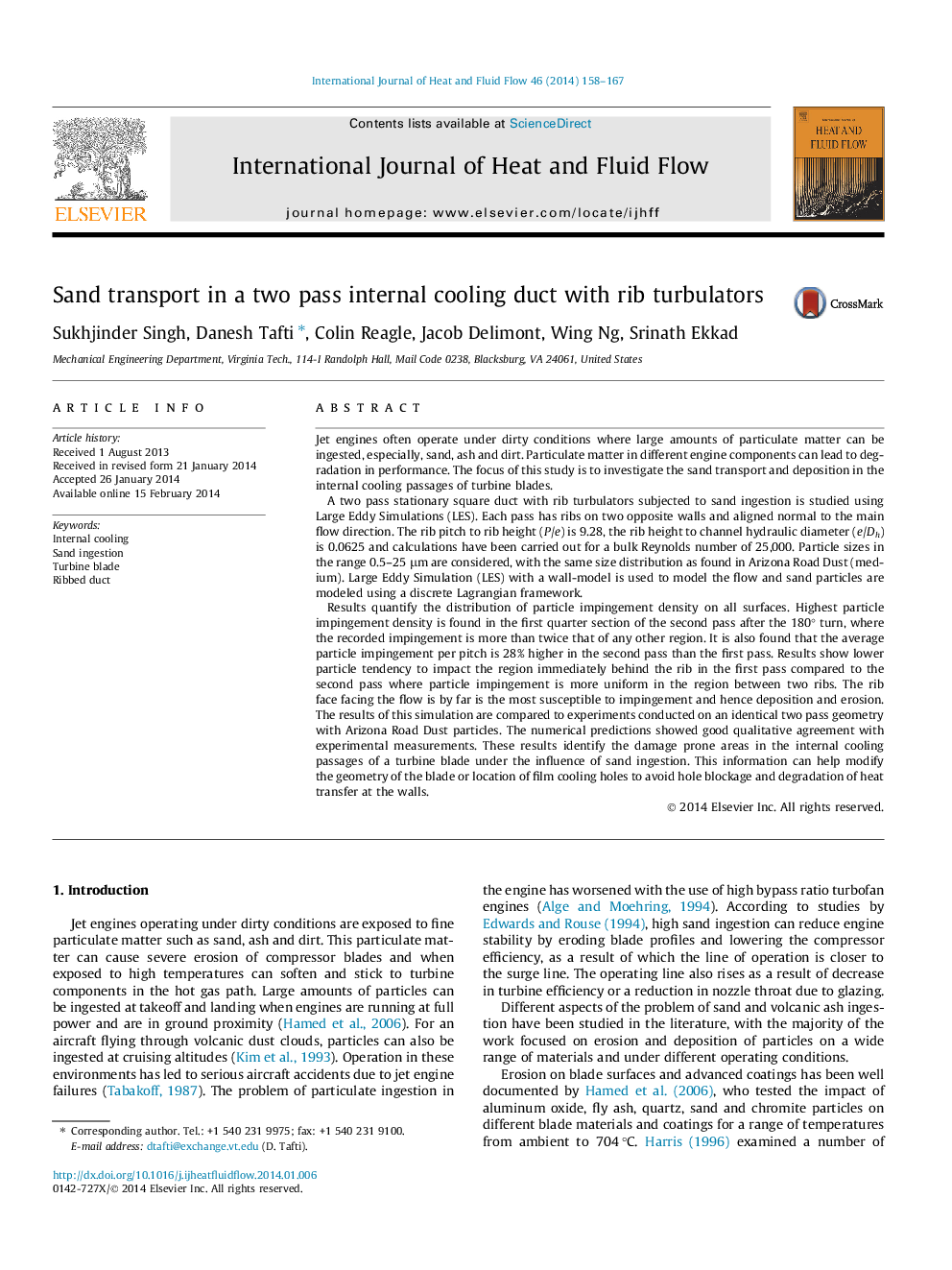| کد مقاله | کد نشریه | سال انتشار | مقاله انگلیسی | نسخه تمام متن |
|---|---|---|---|---|
| 655501 | 1457635 | 2014 | 10 صفحه PDF | دانلود رایگان |

• Highest particle impingement observed in the bend and first quarter of 2nd pass.
• Average particle impingement per pitch is 28% higher in the second pass.
• Rib faces are by far the most susceptible to particle impingement.
• Particle impingement is sensitive to particle size.
• Particle impingement is sensitive to wall collision model used.
Jet engines often operate under dirty conditions where large amounts of particulate matter can be ingested, especially, sand, ash and dirt. Particulate matter in different engine components can lead to degradation in performance. The focus of this study is to investigate the sand transport and deposition in the internal cooling passages of turbine blades.A two pass stationary square duct with rib turbulators subjected to sand ingestion is studied using Large Eddy Simulations (LES). Each pass has ribs on two opposite walls and aligned normal to the main flow direction. The rib pitch to rib height (P/e) is 9.28, the rib height to channel hydraulic diameter (e/Dh) is 0.0625 and calculations have been carried out for a bulk Reynolds number of 25,000. Particle sizes in the range 0.5–25 μm are considered, with the same size distribution as found in Arizona Road Dust (medium). Large Eddy Simulation (LES) with a wall-model is used to model the flow and sand particles are modeled using a discrete Lagrangian framework.Results quantify the distribution of particle impingement density on all surfaces. Highest particle impingement density is found in the first quarter section of the second pass after the 180° turn, where the recorded impingement is more than twice that of any other region. It is also found that the average particle impingement per pitch is 28% higher in the second pass than the first pass. Results show lower particle tendency to impact the region immediately behind the rib in the first pass compared to the second pass where particle impingement is more uniform in the region between two ribs. The rib face facing the flow is by far is the most susceptible to impingement and hence deposition and erosion. The results of this simulation are compared to experiments conducted on an identical two pass geometry with Arizona Road Dust particles. The numerical predictions showed good qualitative agreement with experimental measurements. These results identify the damage prone areas in the internal cooling passages of a turbine blade under the influence of sand ingestion. This information can help modify the geometry of the blade or location of film cooling holes to avoid hole blockage and degradation of heat transfer at the walls.
Journal: International Journal of Heat and Fluid Flow - Volume 46, April 2014, Pages 158–167